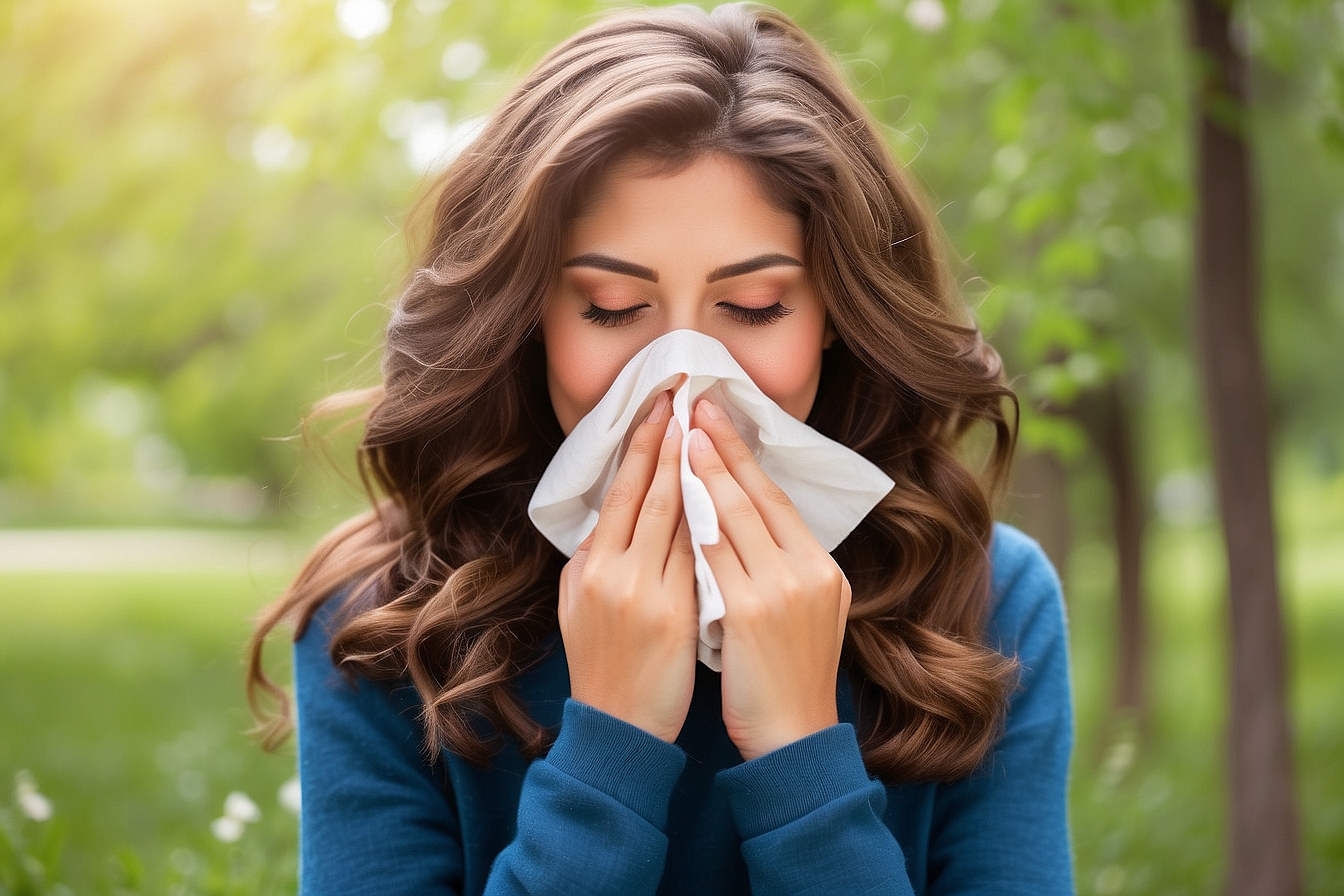We’ve all had that moment – stepping into a room only to be greeted by a wave of discomfort, that tickle in the nose or an unexpected tightness in the chest. It’s disconcerting to say the least, particularly when you’re faced with the fact that the air inside our homes can be significantly more polluted than what we breathe outdoors.
Our article delves into these unseen perils that nestle within our own four walls and offers valuable insights on how you might tackle them head-on. So continue on; it’s not just informative—it could well be crucial for your well-being!
Key Takeaways
- Indoor air quality, or IAQ, is the condition of the air inside our homes and its effect on our health and comfort. Pollutants like dust, mold, carbon monoxide, and chemicals from household products can worsen it.
- Poor indoor air quality can cause both immediate problems such as headaches and long-term issues including respiratory diseases and cancer. Children, elderly individuals and those with pre-existing conditions are more at risk.
- To better indoor air quality: keep HVAC systems clean; use natural cleaning products; control moisture levels to prevent mold; avoid smoking indoors; store household chemicals safely; install HEPA filter air purifiers.
- Enhancing ventilation in your home helps dilute pollutants – use exhaust fans, open windows when possible or introduce mechanical ventilation solutions like ERVs for fresh airflow without losing energy efficiency.
- Weatherising your home by sealing leaks helps prevent outdoor pollutants from coming in while maintaining efficient heating or cooling. This also benefits the environment by reducing overall energy consumption.
What is Indoor Air Quality (IAQ)?
Indoor Air Quality (IAQ) refers to the quality of air within and around buildings, especially as it relates to the health and comfort of occupants. It is influenced by pollutants such as dust, mold, carbon monoxide, and other harmful substances.
Definition
Indoor Air Quality (IAQ) captures the nature of air inside our homes and workplaces, affecting both how we feel and our health. It involves various elements including dust, allergens, mould, radon, carbon monoxide as well as volatile organic compounds (VOCs), all mingling together in the space where we spend much of our time.
We measure it using an index that helps determine if the air is healthy or filled with pollutants that might harm us.
Ensuring good IAQ means keeping these nasties at bay so breathing remains easy and health risks are minimised. With attention to details like ventilation and pollution sources within building structures combined with proactive measures for dust reduction can make a significant difference.
Our goal is to achieve standards that promote respiratory health while reducing incidents related to conditions such as asthma or lung cancer caused by contaminated indoor atmospheres.
Importance for health and comfort
Indoor air quality is crucial for our health and comfort. Clean air reduces the risk of respiratory diseases, cognitive deficits, and other health issues associated with indoor air pollution.
By improving indoor air quality, we can create a healthier living environment for ourselves and our families. Ensuring that the air we breathe indoors is clean also contributes to our overall well-being and comfort.
Improving indoor air quality benefits not only our physical health but also our mental well-being. With cleaner air in our homes, we can enjoy a more comfortable and pleasant living space, promoting a better quality of life for everyone.
Causes of Indoor Air Problems
Indoor air problems can be caused by various factors, including pollutant sources such as tobacco smoke and household products, inadequate ventilation, and the infiltration of outdoor air into a building.
Understanding these causes is crucial for improving indoor air quality in homes.
Pollutant sources
Indoor air pollution can arise from various sources, including:
- Tobacco smoke: a major source of harmful chemicals in indoor air
- Household products: cleaning supplies, personal care items, and pesticides can release volatile organic compounds (VOCs)
- Building materials: asbestos, lead, and radon can be released from old or deteriorating structures
- Biological pollutants: mold, pet dander, and dust mites contribute to poor indoor air quality
- Combustion sources: gas stoves, fireplaces, and heating systems emit carbon monoxide and other pollutants
Inadequate ventilation
Pollutant sources may lead to poor indoor air quality. Without adequate ventilation, these pollutants can become trapped indoors, contributing to health problems. Proper ventilation is essential for diluting and removing indoor air pollutants such as volatile organic compounds (VOCs), radon gas, and other harmful substances that can accumulate in poorly ventilated indoor environments.
Inadequate ventilation can also cause an increase in moisture levels within a building, leading to the growth of mold and mildew, further exacerbating indoor air quality issues.
Improving ventilation systems by ensuring proper airflow and introducing outdoor air into the building helps mitigate these concerns. This is crucial for maintaining a healthy indoor environment for all occupants and reducing the risk of respiratory issues associated with poor IAQ.
How outdoor air enters a building
Outdoor air enters a building through various pathways such as open windows, doors, and ventilation systems. Wind pressure can force outdoor air into cracks and openings in the structure.
Additionally, mechanical ventilation systems actively draw outside air into the building to maintain proper indoor air quality levels. These entry points allow fresh outdoor air to enter the building, diluting indoor pollutants and providing occupants with a healthier living environment.
To further enhance indoor air quality, it’s crucial to properly maintain and regulate these entry points to prevent excessive infiltration of outdoor pollutants while ensuring adequate ventilation for optimal comfort and health benefits.
Health Effects of Poor IAQ
Poor indoor air quality can lead to short-term health effects such as eye irritation, headaches and fatigue, as well as long-term effects like respiratory diseases and even cancer.
Certain groups such as children, the elderly and those with pre-existing health conditions are especially vulnerable to the impacts of poor IAQ.
Short-term effects
The short-term effects of poor indoor air quality can manifest in various ways. Headaches, dizziness, and fatigue are common symptoms experienced when indoor air quality is compromised, which can significantly impact our daily lives.
Respiratory issues such as coughing and congestion may also arise due to exposure to pollutants indoors, affecting our overall well-being.
Additionally, individuals with allergies or asthma could experience intensified symptoms in environments with poor indoor air quality. It’s important for us to be aware of these short-term effects so that we can take proactive measures to improve the air quality in our homes.
Long-term effects
To continue from the short-term effects, exposure to poor indoor air quality over a prolonged period can lead to more serious and long-lasting health issues. For instance, chronic respiratory problems such as asthma and bronchitis can develop or worsen due to continued exposure to indoor pollutants.
Additionally, long-term exposure to volatile organic compounds (VOCs) has been linked with an increased risk of certain types of cancer. Furthermore, ongoing exposure to indoor air pollution can contribute to the development of cardiovascular diseases over time.
Moreover, it’s important for environmentally conscious individuals like us to realise that the impact of poor indoor air quality is not limited only indoors but eventually contributes significantly towards outdoor environmental pollution.
Vulnerable groups
Vulnerable groups, such as children, the elderly, and individuals with pre-existing respiratory conditions, are particularly susceptible to the health effects of poor indoor air quality.
Children’s developing lungs make them more sensitive to pollutants, while older adults may have weakened immune systems and be less able to tolerate exposure to harmful substances.
Those with asthma or other respiratory conditions can experience exacerbated symptoms when exposed to indoor air pollutants. It is crucial for these vulnerable groups to be especially mindful of indoor air quality in their homes and take proactive measures to reduce their exposure.
In addition, pregnant women should also pay attention to indoor air quality as it can impact both their own health and that of their unborn child. Exposure to certain pollutants during pregnancy has been linked to adverse birth outcomes and developmental issues in children.
Improving Indoor Air Quality
Identify and eliminate sources of pollution, improve ventilation, and weatherise your home for better IAQ. For more tips on improving indoor air quality, check out our resources section below.
Identifying and eliminating sources of pollution
Indoor air pollution can come from various sources, some of which may not be immediately obvious. It is crucial for us to identify and eliminate these sources to improve the indoor air quality in our homes. Here are the steps to take:
- Regularly clean and maintain HVAC systems to prevent the buildup of dust, dirt, and other contaminants.
- Use natural cleaning products or those labeled as low-VOC (volatile organic compound) to reduce chemical pollutants in your home.
- Ensure proper ventilation in areas with high moisture levels, such as bathrooms and kitchens, to prevent mold growth.
- Avoid smoking indoors and discourage others from doing so as well.
- Properly store any household chemicals, paints, or solvents in a well-ventilated area away from living spaces.
- Install air purifiers equipped with HEPA filters to remove airborne particles and improve overall air quality.
Improving ventilation
In addition to identifying and eliminating sources of pollution, improving ventilation is crucial for enhancing indoor air quality. Here are some ways to achieve this:
- Installing exhaust fans in the kitchen and bathroom to remove pollutants and excess moisture.
- Using natural ventilation by opening windows and doors when weather permits.
- Utilising mechanical ventilation systems such as air purifiers or air exchangers.
- Regularly maintaining HVAC systems to ensure proper airflow and filtration.
- Utilising energy recovery ventilators (ERVs) to bring in fresh air while retaining energy efficiency.
Weatherising
Weatherising your home involves sealing up any drafts and air leaks to prevent outdoor pollutants from entering indoors. It also helps to improve the energy efficiency of your home, reducing the need for heating and cooling, which can in turn help reduce outdoor air pollution.
- Seal all gaps and cracks using caulking or weather stripping around doors, windows, and any openings where outdoor air can enter.
- Install storm windows and doors to provide an extra layer of insulation against outside air.
- Use draft snakes or door sweeps to prevent air from seeping through the bottom of doors.
- Insulate your attic, walls, and floors to help maintain a consistent indoor temperature and reduce the need for excessive heating or cooling.
- Consider installing an energy recovery ventilator (ERV) or heat recovery ventilator (HRV) to bring in fresh air while still retaining the energy used to cool or heat the indoor air.
Resources for More Information
For further information on indoor air quality, you can turn to federal agencies such as the Environmental Protection Agency and the Centers for Disease Control and Prevention. State and local organisations may also provide valuable resources, along with other reputable sources dedicated to promoting cleaner, healthier indoor air environments.
Federal agencies
We can find valuable information on indoor air quality and health from federal agencies. These agencies provide helpful resources and guidance to improve indoor air quality in homes. They offer research, tips, and tools to help individuals make informed decisions about their indoor environment.
- Environmental Protection Agency (EPA) – The EPA offers a range of resources on indoor air quality, including information on common pollutants, ventilation, and strategies for improving IAQ.
- Centres for Disease Control and Prevention (CDC) – The CDC provides information on how indoor air quality affects health and offers practical advice for addressing IAQ concerns in homes.
- Occupational Safety and Health Administration (OSHA) – OSHA offers guidelines and regulations related to indoor air quality in workplaces, which can also be useful for understanding IAQ issues at home.
- National Institute of Environmental Health Sciences (NIEHS) – NIEHS conducts research on the impact of environmental factors, including indoor air quality, on human health, offering valuable insights into potential health effects.
- U.S. Department of Housing and Urban Development (HUD) – HUD provides resources focused on healthy homes, including guidance on improving indoor air quality through proper maintenance and building practices.
- Consumer Product Safety Commission (CPSC) – The CPSC offers safety alerts and resources related to indoor environmental hazards in homes, helping individuals identify and address potential risks to their health.
- National Institutes of Health (NIH) – NIH conducts research on various aspects of indoor air quality’s impact on human health, providing valuable scientific knowledge to inform actions aimed at improving IAQ at home.
State and local organisations
- Educational programmes focusing on the identification and elimination of indoor air pollutants, such as volatile organic compounds (VOCs) and other sources of pollution.
- Initiatives to promote proper ventilation systems within residential buildings, helping homeowners understand the importance of adequate airflow and its impact on indoor air quality.
- Development of guidelines and regulations to ensure that building structures adhere to standards that promote clean indoor air, reducing the risk of health issues related to poor IAQ.
- Collaboration with community groups and environmental advocates to address specific concerns related to indoor air quality, offering support for initiatives aimed at creating healthier living spaces.
- Monitoring and reporting on regional air quality data, empowering individuals with information about the environmental conditions in their area so they can take appropriate actions to safeguard their health at home.
- Financial incentives or grants to support homeowners in implementing measures for improving indoor air quality, thereby making it more accessible for everyone regardless of financial resources.
- Advocacy for policies that encourage sustainable building practices, such as energy-efficient designs that minimise the need for toxic materials and promote healthier living environments.
Other resources
We can also explore other valuable resources available for information and support in maintaining healthy indoor air quality. Here are additional sources to consider:
- Community environmental organisations – These groups often provide practical advice and support for improving indoor air quality.
- Environmental health websites – Websites dedicated to environmental health issues often offer comprehensive information on reducing indoor air pollution.
- Green building associations – These associations may offer guidance on creating healthier living environments through sustainable building practices.
- Home improvement stores – Many home improvement stores have resources and workshops focused on improving indoor air quality through proper ventilation and pollutant reduction.
- Eco-friendly products manufacturers – Companies producing eco-friendly products often provide educational materials on reducing exposure to harmful chemicals at home.
- Indoor air quality consultants – Seeking professional advice from an IAQ consultant can help in identifying and addressing specific air quality concerns within a home.
Conclusion
In conclusion, indoor air quality is crucial for our health and comfort. Identifying and eliminating sources of pollution, improving ventilation, and weatherising are effective ways to improve IAQ in homes.
Take action now to ensure a healthier living environment for you and your loved ones.
FAQs
1. What is indoor air quality and how does it affect health in homes?
Indoor air quality refers to the cleanliness of the air inside buildings and homes, which is important because poor air can lead to health issues like Sick Building Syndrome.
2. Can you tell me what sources cause indoor air pollution?
Common sources of indoor pollution include chemicals like VOCs (volatile organic compounds) from paints, cleaning products, and building materials that can harm your health.
3. Is there a way to measure how clean or polluted my home’s air is?
Yes, there’s an indoor air quality index that helps you understand the level of pollutants in your home so you can take steps to improve it for better health.
4. What are the signs of Sick Building Syndrome caused by bad indoor air?
If people often feel unwell with symptoms such as headaches or tiredness when inside a building but feel better outside, this could be due to Sick Building Syndrome from poor indoor air quality.





